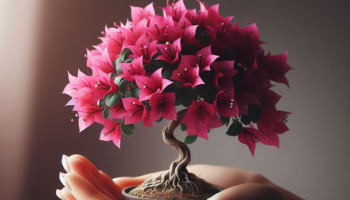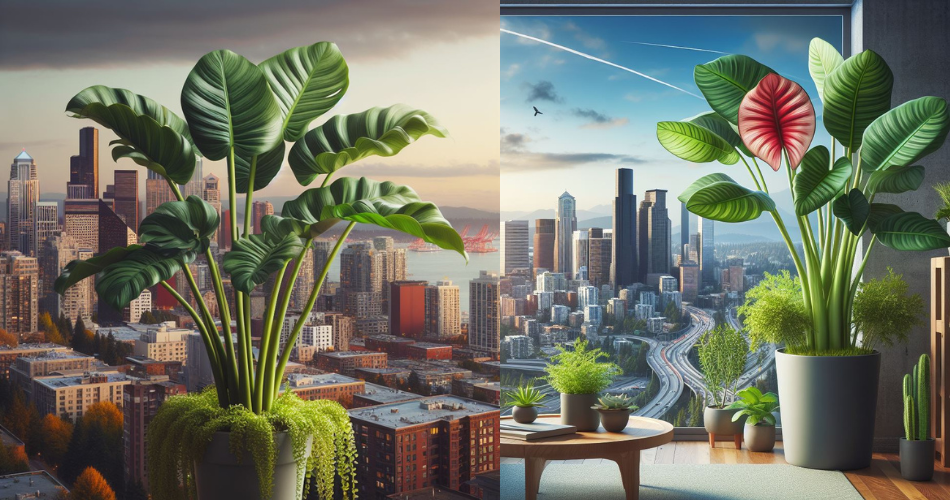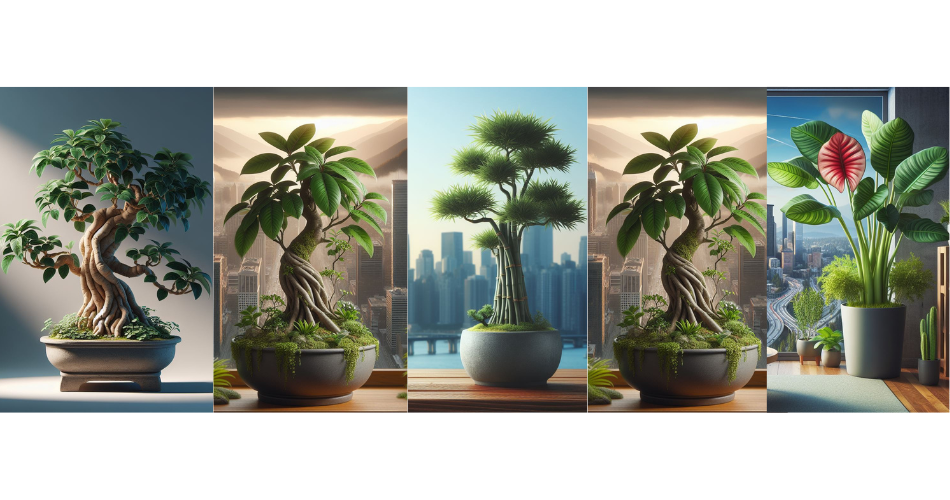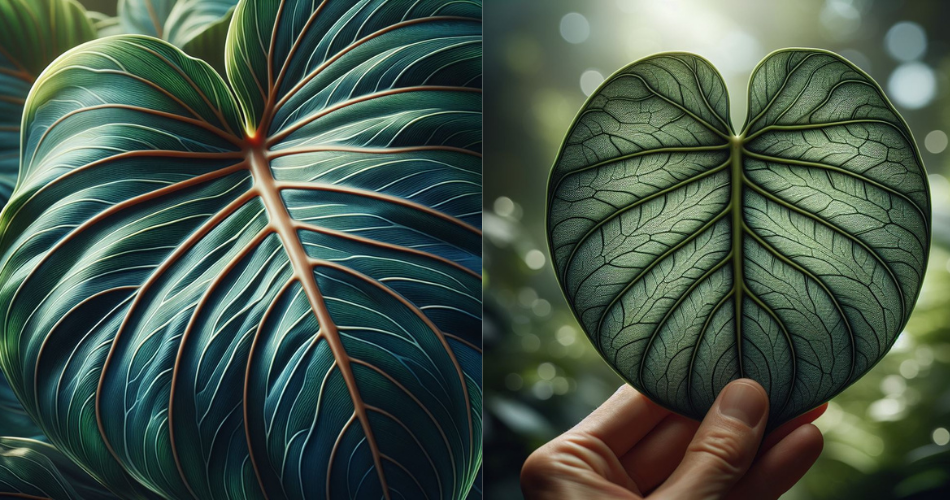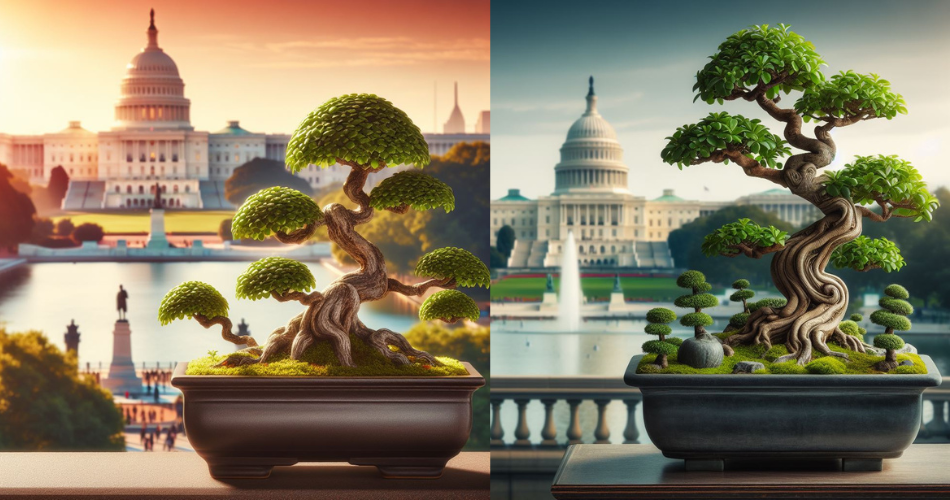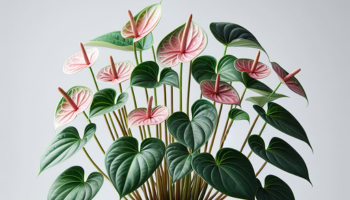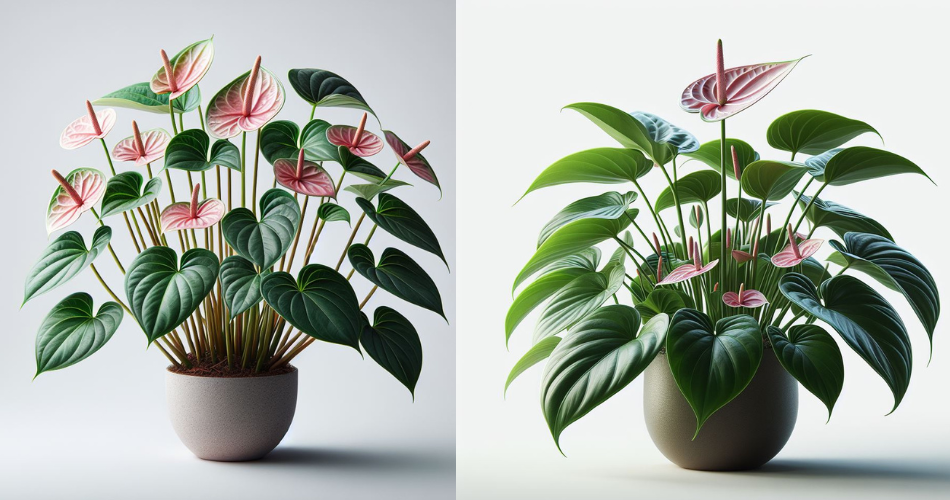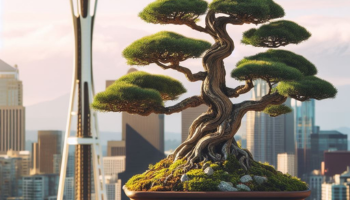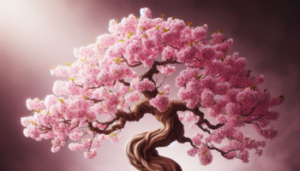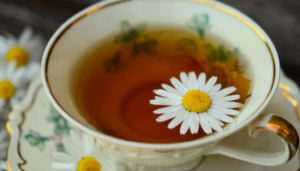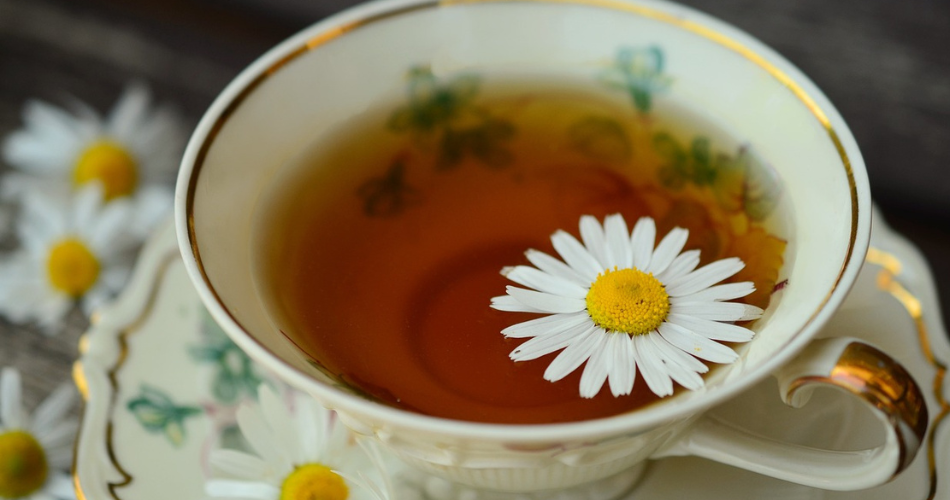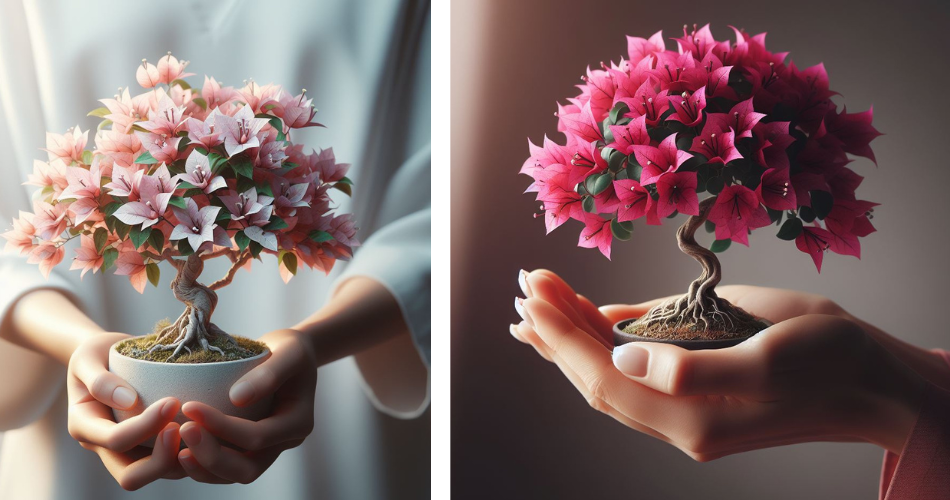
Bougainvillea bonsai is a delightful and captivating plant that has gained popularity among bonsai enthusiasts worldwide. This unique form of bonsai showcases the vibrant and colorful blooms of the Bougainvillea plant, adding a touch of tropical beauty to any collection. In this complete guide, we will explore the fascinating world of Bougainvillea bonsai, from selecting the right species to caring for its specific needs. Whether you are a seasoned bonsai enthusiast or a beginner looking to embark on this bonsai adventure, this article will provide you with valuable insights and techniques to cultivate and maintain Bougainvillea bonsai plants successfully. Let’s dive into the enchanting world of Bougainvillea bonsai and unlock the secrets of its care and cultivation.
1. Introduction to Bougainvillea Bonsai: A Captivating Plant for Enthusiasts
1.1 Understanding the Appeal of Bougainvillea Bonsai
If you’re looking for a plant that will add a burst of color and beauty to your bonsai collection, look no further than the captivating bougainvillea bonsai. With its vibrant flowers and delicate foliage, this plant is a showstopper that never fails to impress. Its unique charm lies in its ability to create an enchanting miniature version of the larger bougainvillea tree, making it a favorite among bonsai enthusiasts.
1.2 Historical Background and Significance of Bougainvillea Bonsai
The history of bougainvillea bonsai dates back to ancient civilizations, where it was revered for its striking appearance and symbolic meaning. Originating from South America, this plant was later introduced to different parts of the world, gaining popularity for its resilience and adaptability. Over the years, bonsai artists have honed their skills in cultivating and shaping bougainvillea into breathtaking miniature trees that tell a story of beauty and perseverance.
1.3 Exploring the Unique Characteristics of Bougainvillea Bonsai
What sets bougainvillea bonsai apart from other bonsai trees is its stunning array of colorful bracts, which are actually modified leaves that surround the small white flowers. These bracts come in various shades of pink, red, orange, and purple, creating a visual spectacle that is hard to resist. Additionally, bougainvillea bonsai thrives in warm climates and can withstand dry conditions, making it a resilient and low-maintenance option for bonsai enthusiasts.
2. Selecting the Right Bougainvillea Species for Bonsai Cultivation
2.1 Overview of Bougainvillea Species Suitable for Bonsai
When it comes to choosing the perfect bougainvillea species for bonsai cultivation, there are several options to consider. Some popular choices include Bougainvillea glabra, Bougainvillea spectabilis, and Bougainvillea bonsai hybrids. Each species has its own unique characteristics and growth habits, allowing bonsai enthusiasts to select the one that best suits their preferences and climate conditions.
2.2 Factors to Consider when Choosing a Bougainvillea Species
Before diving into the world of bougainvillea bonsai, it’s important to consider a few factors when selecting a species. Factors such as sunlight requirements, cold hardiness, and growth patterns should be taken into account to ensure successful cultivation. Additionally, considering the color and size of the bracts can also play a role in choosing the right bougainvillea species that fits your vision for your bonsai collection.
2.3 Popular Bougainvillea Varieties for Bonsai and Their Features
There are several popular bougainvillea varieties that are well-suited for bonsai cultivation. For example, Bougainvillea ‘Barbara Karst’ is known for its vibrant red bracts and vigorous growth, making it a popular choice among bonsai enthusiasts. Bougainvillea ‘Pixie Queen’ is another variety that features delicate pink bracts, creating an elegant and feminine look. Explore the wide range of bougainvillea varieties available and choose the one that resonates with your style and preferences.
3. Essential Tools and Supplies for Bougainvillea Bonsai Care
3.1 Basic Tools Required for Bougainvillea Bonsai Care
To properly care for your bougainvillea bonsai, you’ll need a few essential tools in your arsenal. These include bonsai shears for pruning, concave cutters to remove branches, and wire cutters for shaping and training purposes. Additionally, having a root hook, a rake, and a pair of tweezers can also come in handy during repotting and maintenance tasks.
3.2 Additional Supplies for Optimal Bougainvillea Bonsai Cultivation
In addition to basic tools, there are a few supplies that can greatly improve the cultivation of your bougainvillea bonsai. A high-quality bonsai soil mix that provides good drainage and a balanced fertilizer specifically formulated for bonsai plants are essential. Furthermore, having a spray bottle for misting and a humidity tray can help create the ideal growing environment for your bougainvillea bonsai.
3.3 Understanding the Importance of Quality Tools and Supplies
Investing in good-quality tools and supplies is crucial for the long-term health and success of your bougainvillea bonsai. Well-crafted tools ensure precise cuts and minimize stress on the tree, while quality soil and fertilizer provide the necessary nutrients for growth and development. Remember, a happy and thriving bougainvillea bonsai starts with the right tools and supplies.
4. Key Steps for Proper Bougainvillea Bonsai Cultivation
4.1 Preparing the Ideal Growing Environment for Bougainvillea Bonsai
Creating the perfect growing environment for your bougainvillea bonsai is essential for its overall health and vitality. This includes placing it in a sunny spot where it can receive at least six hours of direct sunlight per day. Bougainvillea bonsai also thrive in well-draining soil, so make sure to choose a suitable bonsai mix and consider using a training pot or container with adequate drainage holes.
4.2 Potting and Repotting Bougainvillea Bonsai: Techniques and Considerations
Potting and repotting your bougainvillea bonsai is an important step in its cultivation. It’s generally recommended to repot every two to three years to refresh the soil and encourage healthy root growth. When repotting, carefully remove the old soil, trim any excessively long or tangled roots, and place the tree in a slightly larger pot with fresh bonsai soil mix. Remember to water thoroughly after repotting to ensure proper hydration.
4.3 Watering, Fertilizing, and Sunlight Requirements for Healthy Growth
Proper watering, fertilizing, and sunlight are crucial for the healthy growth of your bougainvillea bonsai. Watering should be done when the soil feels slightly dry, but avoid overwatering as it can lead to root rot. Using a balanced fertilizer during the growing season can provide the necessary nutrients for vibrant blooms and foliage. Additionally, ensure your bonsai receives adequate sunlight to promote healthy photosynthesis and overall vitality.
4.4 Nurturing Bougainvillea Bonsai: Pruning and Wiring Techniques
Regular pruning and wiring are essential for shaping and maintaining the desired form of your bougainvillea bonsai. Pruning should be done during the dormant season to avoid excessive bleeding of sap. Remove any dead or unhealthy branches, and shape the branches to create an aesthetically pleasing silhouette. Wiring can be used to gently guide branches into the desired position, but caution must be2>5. Understanding Bougainvillea Bonsai Pruning and Shaping Techniques
5.1 Pruning Basics: Why, When, and How to Prune Bougainvillea Bonsai
Pruning…it’s like giving your Bougainvillea Bonsai a fancy haircut, except instead of scissors, you’re using pruning shears. And instead of hair, you’re snipping away at branches. Okay, maybe it’s not exactly the same, but you get the idea.
So why do we prune? Well, first of all, your Bougainvillea Bonsai doesn’t want to look like Cousin It from the Addams Family. Pruning helps maintain a neat and tidy appearance. Plus, it encourages new growth and strengthens the overall structure of your bonsai.
Timing is crucial when it comes to pruning your Bougainvillea Bonsai. The best time to prune is during its dormant period, typically in late winter or early spring. This allows your bonsai to recover and grow vigorously when the warmer months roll around.
Now, how the heck do you prune a Bougainvillea Bonsai without ending up with a botched job? First, identify any dead, diseased, or crossing branches and remove them. Then, trim back excessive growth to maintain the desired shape. Remember, don’t go overboard—less is more when it comes to pruning.
5.2 Shaping Bougainvillea Bonsai: Techniques for Creating Desired Forms
Creating the perfect shape for your Bougainvillea Bonsai is like sculpting a masterpiece, except instead of marble, you’re working with living plant material. It’s like being Michelangelo, but with more dirt under your fingernails.
When it comes to shaping your bonsai, there are a few techniques you can employ. One popular method is wiring, where you gently wrap the branches with wire to guide them into the desired position. Think of it as giving your bonsai a little nudge in the right direction, like a gentle suggestion rather than a forceful command.
Another technique is pruning for structure. This involves removing branches strategically to create an aesthetically pleasing shape. You can think of it as bonsai feng shui—finding the perfect balance between form and function.
Remember, shaping your Bougainvillea Bonsai is an art form, and like any artist, you’ll need some practice to master it. Don’t be discouraged if your bonsai doesn’t look like a work of art right away. Rome wasn’t built in a day, and bonsai masterpieces aren’t either.
5.3 Promoting Ramification and Branch Density in Bougainvillea Bonsai
Ramification and branch density—two fancy terms that basically mean your Bougainvillea Bonsai is filling out nicely, like a well-fitting pair of jeans. It’s all about creating a lush and full canopy that makes your bonsai a showstopper.
To promote ramification and branch density, you’ll need to encourage the growth of new branches. One way to do this is through careful pruning. By selectively pruning back certain branches, you stimulate the growth of new ones. It’s like giving your bonsai a little motivational pep talk: “Come on, buddy, you can do it, grow some more branches!”
Another technique is defoliation. This involves removing some or all of the leaves, which prompts your Bougainvillea Bonsai to produce new foliage. It’s like giving your bonsai a fresh start, a chance to sprout new growth and become even more beautiful.
But remember, don’t go overboard with the pruning and defoliation. Your bonsai needs some leaves to photosynthesize and fuel its growth. Plus, you don’t want your bonsai to look like a naked twig in the meantime.
So go ahead, give your Bougainvillea Bonsai the TLC it deserves. Prune, shape, and promote ramification like a pro, and watch your bonsai flourish into a stunning masterpiece. And hey, if all else fails, at least you’ll have a great excuse to spend more time in the garden.In conclusion, Bougainvillea bonsai is a captivating and rewarding plant to cultivate. By following the guidelines and techniques outlined in this complete guide, you can create and maintain a thriving Bougainvillea bonsai that showcases its vibrant colors and intricate forms. Remember to stay patient, as bonsai cultivation is an art that requires time and dedication. With proper care and attention, your Bougainvillea bonsai will continue to bring you joy and admiration for years to come. So, embark on this bonsai journey and enjoy the bliss of Bougainvillea bonsai cultivation.
FAQ
1. Are Bougainvillea bonsai suitable for indoor cultivation?
Bougainvillea bonsai are generally better suited for outdoor cultivation due to their sunlight and temperature requirements. However, certain Bougainvillea species can tolerate indoor conditions if provided with adequate light and suitable growing conditions.
2. How often should I water my Bougainvillea bonsai?
The frequency of watering your Bougainvillea bonsai will depend on various factors, including the climate, pot size, and soil composition. As a general rule, it is recommended to water thoroughly when the top layer of soil feels dry to the touch. Avoid overwatering, as Bougainvillea bonsai prefer slightly drier soil between watering sessions.
3. Can Bougainvillea bonsai be shaped into different bonsai styles?
Yes, Bougainvillea bonsai can be shaped into various bonsai styles, including formal upright, informal upright, cascade, and broom. However, it is important to keep in mind the natural growth habit and characteristics of the Bougainvillea plant when shaping it into different styles.
4. How can I promote blooming in my Bougainvillea bonsai?
To promote blooming in your Bougainvillea bonsai, ensure that it receives adequate sunlight. Bougainvillea plants require at least six hours of direct sunlight per day to encourage blooming. Additionally, providing a balanced fertilizer with higher phosphorus content during the flowering season can also help stimulate blooming.

